- 36912 Kibri N/Z Wall section irregular with caHPtones
- K9009 Kernow Models GWR Steam Railmotor Fishbelly Bogie
- 6597 Busch N 50 Pine Trees
- FC134 Woodland Scenics Underbrush Clump Olive Green
- 36-871 Bachmann Right-hand Standard Point (Self-Isolating)
- NR-119 Peco 9ft Wheelbase Wooden type solebars chassis kit
- 2A-000-010 Dapol Magnetic Coupling Short Arm - 1 Pair
- 47-0102 Bachmann Scenecraft Slate Built Water Tower
- 76105011 Oxford Diecast Ford Anglia Ambassador Blue
- ACC2447-DCC Accurascale BR J67 Steam Loco - 68535 - BR Black
- 7D-008-020U Dapol Class 08 BR Blue Wasp Stripes
- 9983 Heljan Lynton & Barnstaple Baldwin 2-4-2T Steam Locomotive
- MM006 The ModelMaker Modellers Pliers Set
- 7S-006-004U Dapol 48xx Class Steam Loco - unnumbered
- SL-501 Peco Streamline 0-16.5 Wooden Sleepering 124mm
- 37041 Kibri N Family homes Amselweg (2 pcs.)
- 35-776SF Bachmann Class 69 69001 Mayflower GBRf (UK & US Flags)
- DCD-MPLL DCC Concepts Alpha Mimic Controllable Building Lighting
- 21514 Noch Dark Green Hedge 50cm long.
- 955001 Rapido LNER Dynamometer Car No.23591 Mallard
- C4302 WSL Scalextric Castrol Rally Car
- GMKD1002 Kestrel Locomotive Works Kit
- GM4240205 Heljan Class 47 Diesel 47 492 Enterprising Scot
- GM751 Gaugemaster Small Valley Backscene
- TR3521 Woodland Scenics Classic Tree - Cool Shade Dark
- 42-050 Graham Farish Scenecraft Four Road Engine Shed
- E87525 EFE Rail PBA Tiger TRL 33 70 9382 059 ECC Blue
- 391-135 Bachmann Penrhyn Main Line Hunslet 2-4-0STT Linda
- CB-606-7 Proses 10 X Pre-Cut Cork Bed for R606-607 R2 Curve Trac
- B1381 Woodland Scenics Medium Ballast Light Grey
- 20-110 Kato Ground Level Radius 282mm Curved Track 45 Deg
- SK-25 Peco Scene Large Background - Old Industrial Town
- SL-302F PECO Concrete Sleeper Flexible Track MIN 15 MAIL ORDER
- R30035 WSL Hornby Railroad Steam Locomotive Train Pack
- K9917A Rapido + Kernow SR Wagon Pack
- C1255 Woodland Scenics Single Tunnel Mouth Random Stone
- 32-644Z-TBSK Bachmann 4-TC TBSK Body S70821 Premier Charter Blue
- 7S-006-025UD Dapol 14xx Class Steam Loco - unnumbered
- 44461 Bachmann HO Remote Left-Hand Switch
- TR1112 Woodland Scenics Realistic Tree Kit
- L166 Woodland Scenics Lichen Natural
- 8120 KS Metals Copper Tube
- ATD011 ATD Models Stone Boiler House & Chimney Card Kit
- OR76J26001 Oxford Rail LNER J26 Steam Locomotive number 5738
- 76FR001 Oxford Diecast Ford Ranger Raptor Agate Black Metallic
- 22-144 WSL Bachmann Scenecraft Police and Security Staff
- R169 Hornby Junction Home Signal
- OOT60 Tracksetta 60in Radius Curve
- C007 Dapol Single Road Engine Shed Kit
- C1256 Woodland Scenics Double Tunnel Mouth Concrete
- HC8040 Hornby International Set of 4 Scharfenberg Couplings
- GM215 Gaugemaster Point and Crossing Brown Ballast Underlay Kit
- AE2500 # Humbrol Liquid Poly Cement 28ml bottle
- 254 KS Metals Tin Sheet
- 44411 Bachmann HO E-Z Trac 9" straight
- GJ01 Ratio London and North Western Railway Wooden Station Bits
- 8105 KS Metals Aluminium Tube 7/32in x 12in
- BFS-4 Plastruct Fineline I Beams
- 44-293 Bachmann Scenecraft Narrow Gauge Tunnel Portal
KMRC Skrifa - 3rd and 4th Rail Electrification Systems - Part 1 - The Background & Design
Our Guildford Branch team member and Network Rail Signalling designer, Simon Paley, takes a look at the 3rd and 4th Rail electrification systems. In this first post he discusses the background to the system. In his part 2 Skrifa post here, he provides a step by step guide how to install 3rd and 4th rail on your layouts and in his part 3 Skrifa post here he discusses the conductor rail accessories and other relevant lineside details.
History
The first use of an electrified conductor rail on a main line railway in the UK was by the City & South London Railway in 1890, who utilised a 500v centrally mounted rail. What could be termed as the first ‘proper’ third rail came about in 1905 when the Liverpool Overhead Railway re-located it’s centrally mounted 525v conductor rail to the outside of the running rails.
The first ‘forth’ rail D.C. electrification system was on the jointly operated Earls Court to High Street Kensington section of the Metropolitan & District Railway in 1899, however it wasn’t until 1901 that the standard 3rd and 4th rail arrangement, operating at 630v D.C., was adopted by, what was to become, the Underground. The fourth rail system was used by several mainline railways as well; The Mersey Rail converted to a 600v DC system, the first railway to convert from Steam to entirely electric operation as did the Lancashire & Yorkshire Railway on its Liverpool Suburban network. The London North Western Railway used the fourth rail system extensively on its London Suburban Network from 1914 onwards.
The third rail system was adopted by the North Eastern Railway for use on its coastal suburban network to the north of the River Tyne in 1904. However, it was in 1913 that the largest D.C. third rail system in the world was started, when the London & South Western Railway (LSWR) decided on the use of a 660v DC system. The London Brighton & South Coast Railway and the South Eastern & Chatham Railway had decided to use different electrification systems ( 6700v A.C. Overhead and 1500v DC fourth rail respectively), but the LSWR system was standardised on by the Southern Railway upon the grouping in 1923.
The Southern third rail systems were then gradually upgraded to 750v from 660v after the 1955 modernisation plan, although now the current setting is between 750v and 850v DC, interestingly, the Isle of Wight System has been running at 660v DC, although the current (2021) upgrade works have seen this increased to the standard 750v.
As well as the Southern Region the other networks of 3rd rail systems in the UK are the Mersey Rail & London Overground networks as well as the Northern City Line between Drayton Park & Moorgate in London. The 4th rail system is used exclusively in the UK by the London Underground, although there are places with it can be seen on ‘Main Lines’ (such as on the Chiltern lines to Amersham), and there are places where both 3rd and 4th rail systems can be seen together (such as at Richmond, Wimbledon and the ‘Watford DC’ lines out of Euston).
Principles of Operation
The principle of operation for both systems is very simple, the positive side of the electric power supply (transformed at the lineside from the National Grid) is fed through the 3rd rail on the outside of the running rails. For 3rd rail only systems, the rail is electrified at 750v whilst for 4th rail systems, the outside rail is electrified at 420v. This is picked by collector shoes mounted on the bogies of the trains and is passed through the trains control systems to the electric motors.
In 3rd rail only systems, the return electric current (at 0v) is fed from the electric motors to the trains wheels to be returned to the substation through one of the running rails. In 4th rail systems, the return electric current (at -210v) is fed to another ‘collector’ shoe running along the central 4th rail.
Where both systems operate together, it is usual that the 3rd outside rail is fed at +660v DC whilst the central forth rail is bonded to the running rail and operates at 0v.
Modelling Conductor Rail
The products and processes described in here are for 4mm:ft or ‘OO’ scale layouts, but can easily be adapted for use in other scales. For instance, 2mm scale modellers can use code 40 rail solder to PECO track pins, whilst 7mm scale modellers can use parts from C&L Finescale.
For the 4mm scale modeller, PECO has both Individulay IL-120 conductor rail insulators and IL-1 Code 60 Rail in its range.
Before you start installing conductor rail, you should plan out where it will be fitted and what the layout of it is going to be. First of all, lets look at the offset and heights of third and forth rail:
|
Dimension |
1:1 (mm) |
1:148 (mm) |
1:76 (mm) |
1:43.5 (mm) |
|
‘D1’ |
405 |
2.7 |
5.3 |
9.3 |
|
‘D2’ |
717 |
4.8 |
9.4 |
16.5 |
|
‘H1’ |
76 |
0.5 |
1 |
1.7 |
|
‘H2’ |
38 |
0.2 |
0.5 |
0.9 |
Of course, if you are using PECO components, the heights of the 3rd and 4th Rail is already fixed for you.
Now for layout of third rail, starting with plain line:
Insulators, the components that carry the conductor rail, are placed every 4th or 6th sleepers (Dimension ‘L1’) for the third rail, depending on curvature and location, and placed every 4th sleeper for fourth rail. Also, a third rail insulator must not be on the same sleeper as a fourth rail insulator.
The key to plain line 3rd rail is to try to make sure that the rail is placed evenly either side of the track to ensure that the wear on the collector shoes on either side of the train is even. There are some places where the side of the track is specified for safety, one of those is in Station Platforms, where the conductor rail must be on the side furthest from the platform, in case someone falls off the platform. Where the rail changed sides of the track, there must be an overlap (dimension ‘L2’), this is specified as 7m, but can be reduced to 6m where the speed is lower than 45mph.
|
Dimension |
1:1 (mm) |
1:148 (mm) |
1:76 (mm) |
1:43.5 (mm) |
|
|
‘L1’ |
3rd Rail |
Every 4th or 6th Sleeper |
|||
|
4th Rail |
Every 4th Sleeper |
||||
|
‘L2’ |
>45mph |
7000 |
47 |
92 |
161 |
|
<45mph |
6000 |
41 |
79 |
138 |
|
|
‘L3’ |
LX |
300 |
2 |
4 |
7 |
|
AWR |
2000 |
14 |
26 |
46 |
|
Switches and Crossings, or points, are where conductor rail arrangements gets interesting, for more detailed examples, see the excellent website by Russ Elliot here:, but the diagrams below can be used as a basis:
|
Dimension* |
1:1 (mm) |
1:148 (mm) |
1:76 (mm) |
1:43.5 (mm) |
||
|
|
Switch |
Speed |
||||
|
‘L4’ |
- |
- |
760 |
5 |
10 |
17 |
|
‘L5’ |
A |
0mph – 20mph |
4960 |
33 |
65 |
114 |
|
B |
20mph – 23mph |
6320 |
43 |
83 |
145 |
|
|
C |
23mph – 27mph |
7965 |
54 |
101 |
183 |
|
|
D |
27mph – 31mph |
9490 |
64 |
125 |
218 |
|
|
E |
31mph – 43mph |
12660 |
85 |
167 |
291 |
|
|
F |
43mph – 54mph |
15730 |
106 |
207 |
362 |
|
For an example, the conductor rail arrangement for a Crossover could be as follows:
To ensure that the collector shoes on the bogies have a smooth run onto and off the conductor rail, the rail is angled down at the ends to form a ramp. There are two types of ramp, a high speed ramp and a low speed ramp (used where the speed is lower than 45mph):
|
Dimension |
1:1 (mm) |
1:148 (mm) |
1:76 (mm) |
1:43.5 (mm) |
|
‘H3’ |
64 |
0.4 |
0.8 |
1.5 |
|
‘L7’ |
380 |
3 |
5 |
9 |
|
‘L8’ |
3050 |
21 |
40 |
70 |
|
‘L9’ |
1830 |
12 |
24 |
42 |
The EM Gauge Society provides separate ramp castings for its members, but they can be formed by bending the conductor rail using a pair of pilers.
Check out his Skrifa Post- 3rd and 4th Rail Electrification Systems - Part 2 - a step by step guide in conductor rail installation. and his Skrifa Post - 3rd and 4th Rail Electrification Systems - Part 3 - Conductor Rail Accessories and lineside details.
Further Reading
Although not 3rd or 4th Rail related check out Simon's book Colour Light Signalling for Model Railways. ISBN: 9781785006258 Published in October 2019.
Keep in Touch
We also publish regular project updates on our "Latest News" section here and also in our Weekly newsletter, if you are not already signed up for the newsletter you can do so here.
What do you think? Get in touch with your thoughts, suggestions for future post or suggestions for future models!
-

Academy Models
-

Accurascale
-
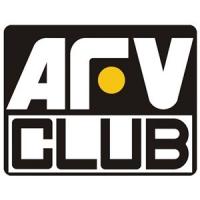
AFV Club
-
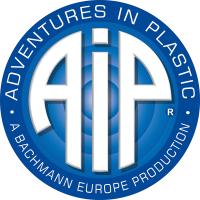
AIP by Bachmann
-
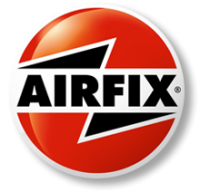
Airfix
-

Arnold
-

ATD Models
-

Auhagen
-

Bachmann
-

Bachmann Narrow Gauge
-
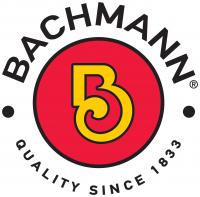
Bachmann USA
-

Bassett-Lowke
-

Berko
-

Busch
-

C Rail
-

Cambrian
-

Corgi
-

Cornerstone
-

Dapol
-

DCC Concepts
-

Deluxe Materials
-

Dundas
-

Easy Model
-

Eckon
-

EFE Rail
-

EFE Road
-

Emhar
-

ESU
-
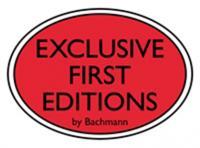
Exclusive First Editions
-

Faller
-

Fleischmann
-
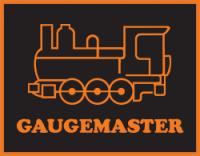
Gaugemaster
-

Gecko Models
-

Golden Valley Hobbies
-

Graham Farish
-

Greenlight Collectibles
-

Heljan
-

HK Models
-

Hornby
-

Hornby International
-

Hornby TT:120
-

Humbrol
-
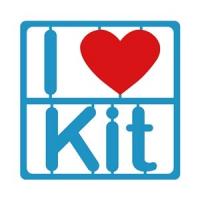
I Love Kit
-

Jouef
-

K&S Metals
-
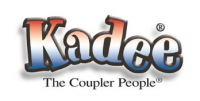
Kadee
-

Kato
-

Kernow Models
-
Kestrel
-

Kibri
-

Lenz Digital
-
LightCraft
-

Liliput
-
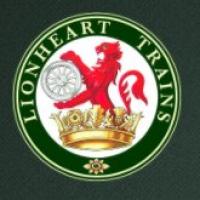
Lionheart Trains
-

Merit
-

Metcalfe
-

Middleton Press
-
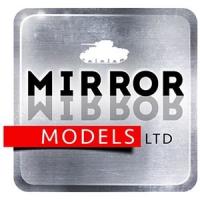
Mirror Models
-
Miscellaneous
-

model scene
-

ModelMaker
-

Murphy Models
-

Noch
-
OPC
-

Oxford Diecast
-
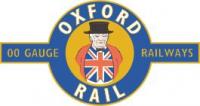
Oxford Rail
-

Parkside by Peco
-

PECO
-

Plastruct
-
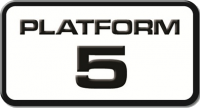
Platform 5
-

PM Model
-

Preiser
-

Proses
-
RailMatch
-
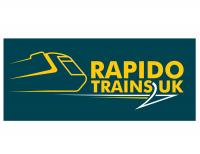
Rapido
-

Ratio
-

Revell
-

Revolution Trains
-

Rivarossi
-

Roco
-

Roden
-

Scalextric
-
Shawplan
-

Slaters
-
Smiths
-

Soundtraxx
-

Springside
-
Star Tec
-
Strathwood
-

Superquick
-
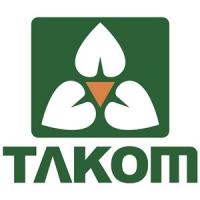
Takom
-
Taliesin
-
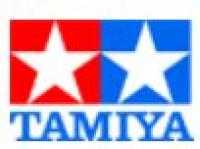
Tamiya
-

Thunder Model
-

Tillig
-
Tiny Signs
-

Toyway
-
Tracksetta
-

Train Control Systems
-

Train-Tech
-

TrainSave
-

Trix
-

Trumpeter
-

Viessmann
-

Vollmer
-

Wiking
-
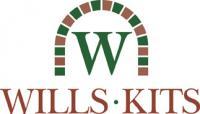
Wills
-

Woodland Scenics
-

Xuron

Connect with us socially

